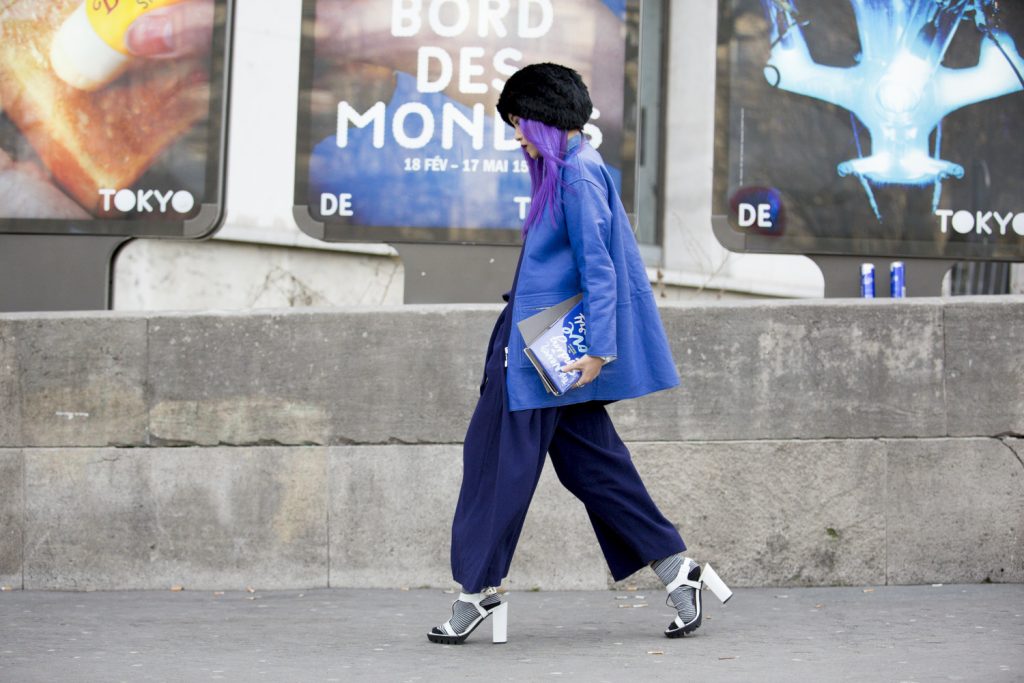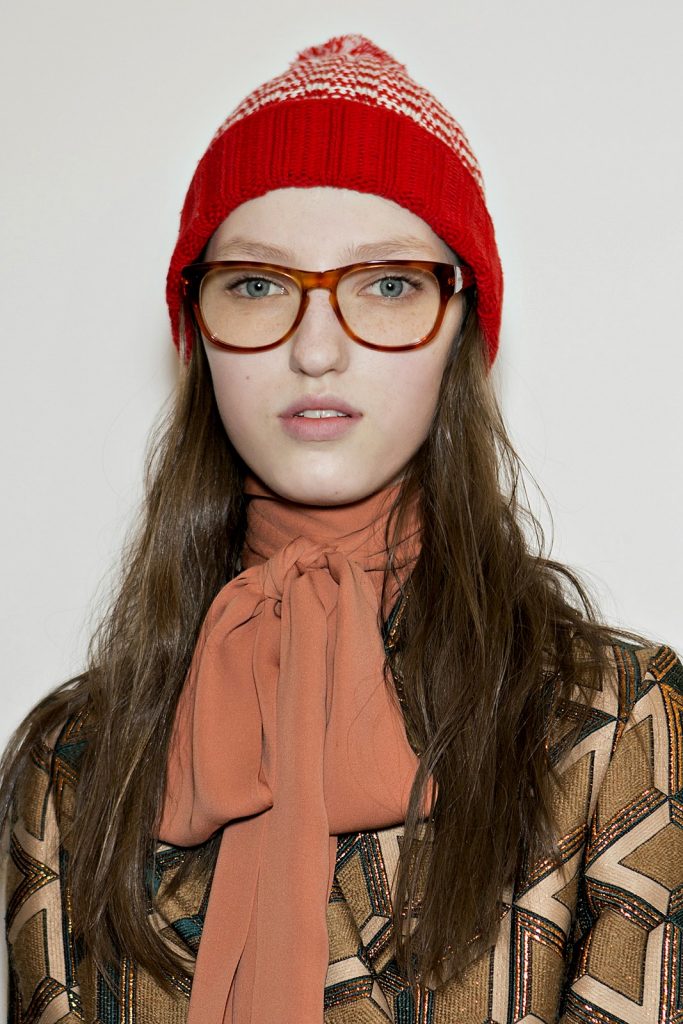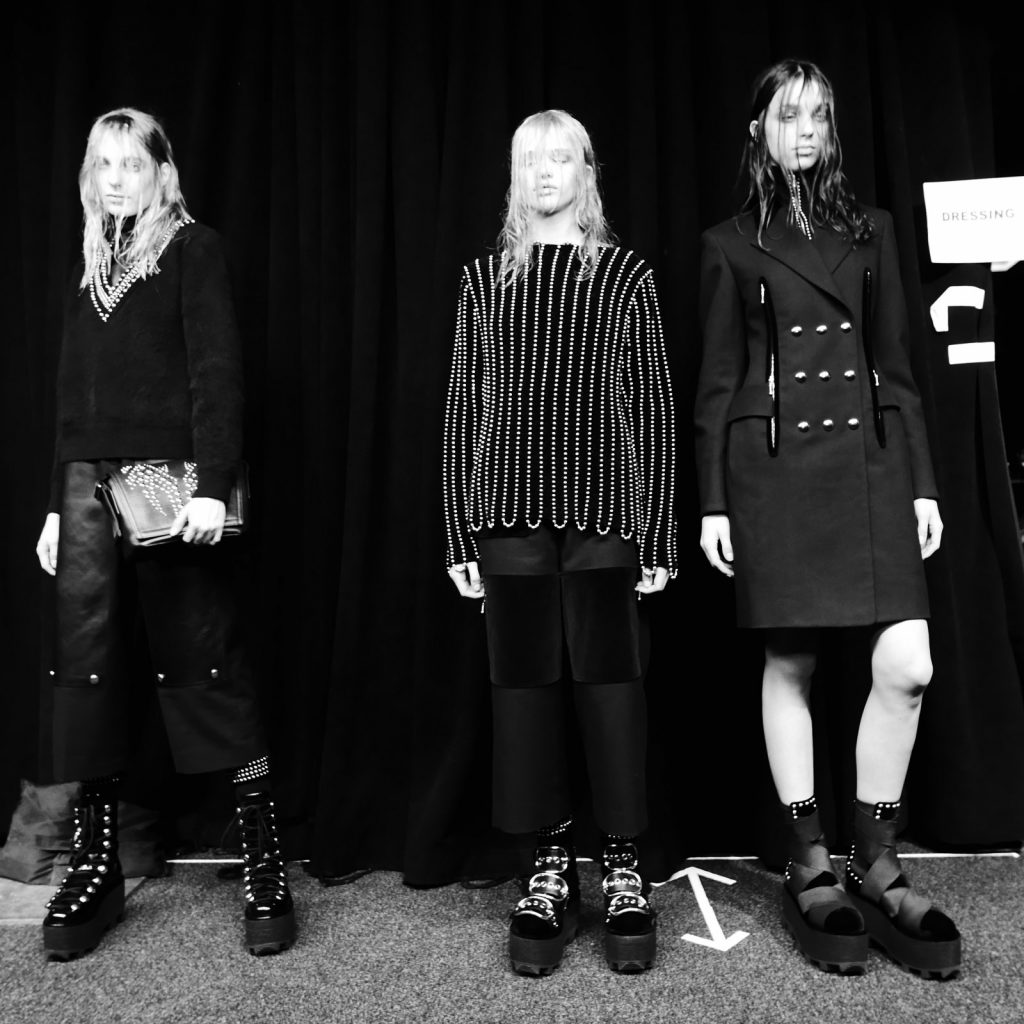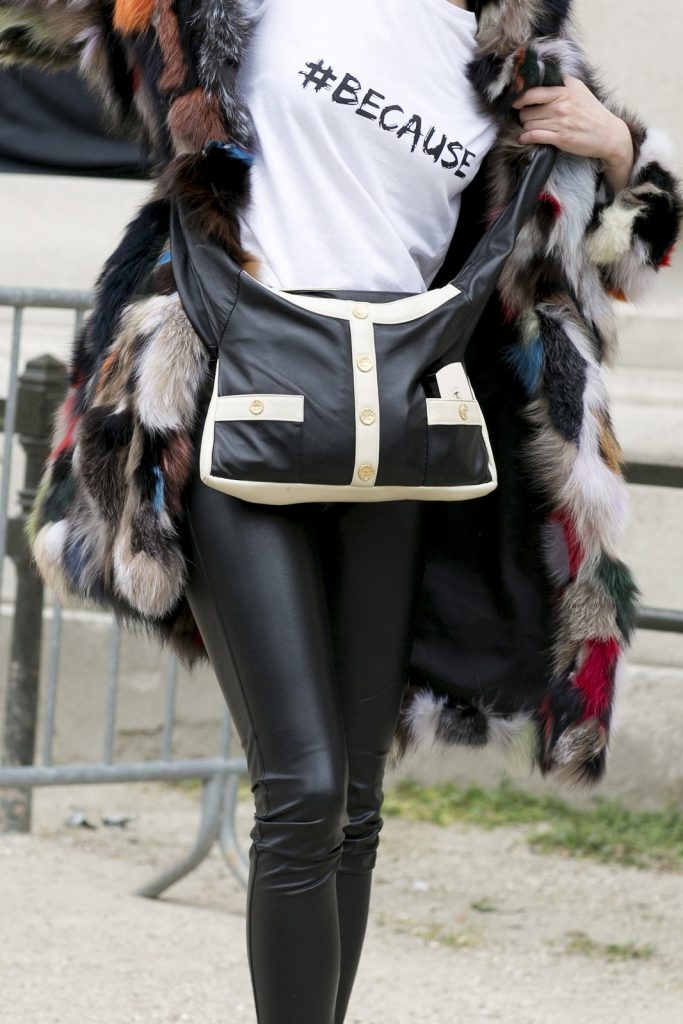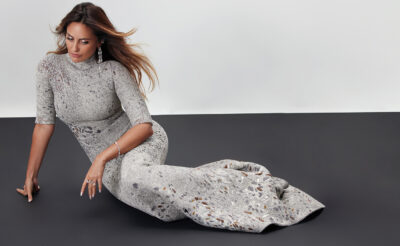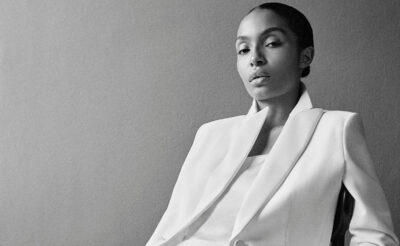As we stockpiled Moschino’s Looney Tunes sweaters and considered how to work Alexander Wang’s street-inspired movement into our wardrobes, in MOJEH Issue 30 we paused to consider just how much youth culture is influencing luxury fashion.
Sometimes it seems that our society is obsessed with youth. We are bombarded with products, images and instructions on how to look youthful and remain as energetic as teenagers on a daily basis. We adopt the latest trends in exercise, diets and fashion as ardently as if discovering these things for the very first time, and our cultural icons and references align with those of generations much younger. Even the innocent question of ‘how old are you?’ has taken on a new significance. Research by Professor Robert Harrison of Stanford University concludes that for the first time in history we are getting younger as a society, even as we continue to age. “The young have become a model of emulation for the older population, rather than the other way around,” he notes. We are living in an age of juvenescence. Nowhere is this more visible than in fashion.
As the AW15 luxury collections spill over with street style and youth culture references, from Jeremy Scott’s lurid cartoon faces for Moschino and the return of grungey plaid to the eclectic march of Gucci’s sensitive literati girls and boys, the allure of youth has cast its spell over the hallowed fashion elite. “There is something about the optimism of cartoon-pop or sport influenced design: there is a youthful energy to it,” says Jonathan Kyle Farmer, Professor and Chairperson of MFA Fashion Design at the Fashion Institute of Technology’s School of Graduate Studies in New York. “It feels young and it feels light. We need that optimism in fashion because it can be a very heavy industry and a very serious one. I think what it represents is possibility.” A sense of playfulness manifests everywhere from Fendi’s furry doe-eyed bag bugs to Anya Hindmarch’s supermarket sweep Frosties handbag emblazoned with Tony the Tiger. If we are fighting a battle to keep a sense of childhood nostalgia out of fashion, we are losing – and perhaps that’s half the fun as we grow older (dis)gracefully.
“These days we live longer, we have the expectation of enjoying youthful health and culture, and there are ways and means of making your face and body look younger for much longer,” says Ruth Adams, Senior Lecturer in Cultural & Creative Industries at King’s College London and an expert in youth subcultures. “There is a great emphasis on putting off old age for as long as possible and I think dressing younger is part of that. I don’t see why women should be constrained by their age and their choice of clothes.” And it doesn’t stop with our image. Everything from the holidays we take (The Balearics, naturally), to our sports pursuits (FlyBarre), food faddism and social media habits are driven by a generation of increasingly young designers, musicians, models and influencers.
Lest we become clichés of every cultural fad of 2015, we can at least cultivate a healthy sense of irony. The childish tropes we see designers adopting undoubtedly have a tongue-in-cheek, sardonic element to them. Fashion has long employed humour as the ultimate Meta rebellion – aren’t we all having the last laugh? “Moschino has always had an element of satire in his work,” Adams notes. “I remember he produced a jacket in the early Nineties that said ‘Waist of Money’ on the waistband. He was always sending up high fashion and blurring those boundaries. I think it is to do with the culture of youth…people’s youth is stretched and I think the fashion reflects that.” A wry self-awareness of the ridiculous rewards us with a certain kudos that the young-at-heart still covet today. Just ask Madonna.
The young have become a model of emulation for the older population, rather than the other way around. We are living in an age of juvenescence.
Today, Alexander Wang is the unofficial ringmaster of all things youth inspired in fashion. His skillful touch with high-tech fabrics, bodycon silhouettes and desirable urban accessories have made him the designer that young people want to wear and that other designers (and their accountants) want to emulate. “Because trend-led fashion has become the norm, fashion-forward youth markets, in order to be ‘leaders’, are pushing further into the luxury market,” says Julia Fowler, co-founder of EDITD, a real-time market data and analytics tool for the fashion industry. “Contemporary luxury designers speak directly to their interests and budgets. The average price of an Alexander Wang apparel item is currently $358. Compare that to Christian Dior at $734 or Prada at $526 and you can understand the whole mid-tier of luxury opening up.” While always seeking to innovate and lead, fashion must also serve demand. “It’s about what people want right now. It’s not what you are doing as a designer, it’s whether you are responding to what people are looking for,” says Farmer. In an age where consumers lead active lifestyles and consider themselves younger for longer, it makes sense that sport, streetwear and youth culture filter upwards into high-end fashion. “This has influenced more traditional design houses like Balenciaga, Dior, even Hermès,” says Fowler. “Take the Dior runway sneaker – retailers can barely keep them in stock, despite their price tag.”
Fashion has democratised and, in doing so, has opened up to ever-expanding geographies and increasingly younger customer demographics. “Online retail has had a major impact on the consumption of fashion,” says Fowler. “The average consumer is now incredibly clued up about fashion and trends. Just look at the way runway shows are no longer ‘industry only’ – the whole world can livestream online. Luxury brands understandably want to cater to the new customers on their radar, and this has seen younger elements being incorporated into their ranges, as well as an increase in merchandise and building into categories like accessories and jersey.” This undoubtedly translates into sales. According to American Express, Millennial spending in full-priced online luxury retail grew more than any other demographic in 2011 (by a staggering 31percent). Yet Wang, for one, is not content to communicate his youthful vision solely in the mid-market. His particular moment of transcendency occurred upon his appointment in 2012, aged 28, as creative director of the esteemed house of Balenciaga – once a couture giant that only the likes of Christian Dior and Chanel could rival. The move made him the first American designer to take a role at a major Parisian house since Louis Vuitton ordained Marc Jacobs in 1997. If Wang’s early collections for Balenciaga were anything to go by – sleek, challenging silhouettes and a SS15 collection inspired by the Tour de France – this move signalled a tidal wave of change, not only in the front row but in the demographic of consumers buying into the more traditional forefathers of high fashion. In Wang’s case, the Balenciaga adventure was short lived and the house has recently announced an amicable split. Whether Wang’s departure is down to the unending pressure of helming two major labels, his irreverent version of Balenciaga’s heritage failing to resonate, or simply the expiry of his contract, it’s clear that both sales growth and consumer perception during Wang’s tenure remained remarkably positive. Whatever the reason, the ripples caused by young cutting-edge designers taking over at established houses – and in so doing representing a generation’s style – continue to spread ever further.
Consider the success of Hedi Slimane’s Saint Laurent, which now finds its home in youth-obsessed LA. Something of a Renaissance man, the designer’s photographic lens more often than not finds a steady stream of exuberant young rockers as subjects, reflecting an edgier aesthetic than the Yves Saint Laurent of the past. And even a glancing look at Jonathan Anderson’s campaigns for Loewe, particularly his SS15 debut shot by Steven Meisel, show a deliberate move away from the glossy celebrity images of previous seasons and towards a pared back realism in which a group of young intelligentsia lounge on the beach in a living recreation of an Alex Katz painting. As the designer told The New York Times: “In my own brand, I exercise fashion. If I’m going to be challenged in a different way, it has to be about a cultural landscape.” Add into the mix the cinematic yet offbeat AW15 campaign of Alessandro Michele’s Gucci shot amidst the crowds of everyday New York and a languorously youthful theme is evidently clear.
It’s a movement that is gathering momentum and which reveals that the ‘grown-ups’ no longer dictate from above. Today the conversation is peer to peer. Olivier Rousteing was appointed creative director of Balmain aged just 25 in 2011 and, notably through social media, very visibly aligned the brand with celebrity culture, a new generation of supermodels and a fierce take on glamour that remains just on the commercial side of real rebellion. The fine jewellery industry is experiencing a similar diversification, too. Hollie Bonneville Barden’s stellar rise at De Beers, for example, saw her take the reigns as head designer at the age of 27, bringing innovation and fresh eyes to an exceedingly traditionalist heritage brand. Likewise at Buccellati, fourth generation designer Lucrezia Buccellati stepped up as joint creative director of the Italian high jewellery house last year aged 24, a move which coincided with a rebranding and the introduction of pieces at a (relatively) lower entry point as well as bejewelled tech accessories. “I do think fashion is changing massively on every level in terms of its output,” says Farmer, citing the stepping down of Donna Karan and the changes in heads of department at key fashion institutions such as Central Saint Martins and the Royal College of Art as examples of the gradual renewal of fashion’s old guard. Karl Lagerfeld, Giorgio Armani and Miuccia Prada may similarly be facing succession quandaries in the coming years. “I think the whole industry is like a snow globe right now, it has been shaken up. We’re just waiting for these little particles to fall and land so we can make sense of it. There is this definite undercurrent of youth that is pushing its way forward at last. It needed to happen,” says Farmer.
The codes of these youth-adopted movements infiltrate fashion from high to low like so much dispersing pollen.
But who are the contemporary cliques prescribing what’s in and what’s out today? “It’s a lot more problematic and diffuse now than it used to be,” says Adams. “You go back to the Nineties and there were many more visible tribes.” Rather than goths, punks and hipsters, it is not specific groups that hold sway over the zeitgeist today but wider movements, like hip-hop or the cult of the music festival (with its own distinct uniform of flower garlands and ankle boots). The codes of these youth-adopted movements infiltrate fashion from high to low like so much dispersing pollen. “Pre-Internet, I think there was time for street and youth cultures to grow and develop on their own terms before they were picked up,” says Adams. “But now I think they are expressed and shared on the Internet, which means they are transmitted and commodified very quickly…I think there might still be subcultures but I don’t think they exist in the same way that they used to.” In the fast fashion era, there is a waning commitment to political, music-based or fashion tribes that require high maintenance dedication to a ‘look’. Instead we seek out the visual language of easy movements that offer instant beauty and a sense of belonging (a normcore aesthetic or a Kenzo sweater). But in the absence of any underlying values, these alliances often fall short of genuine subcultures and risk fading as quickly as ephemeral fads. “It’s a lot easier to have diverse tastes today. Commitment to particular cultural positions has diminished,” Adams concludes.
If our kitsch cartoon references and Frankenstein boot obsession is to be as fleeting a phase as the bandage dress, it’s possible that a return to refinement is just around the corner. So will the power of the iGeneration start to wane? It seems unlikely. The Ipsos Mendelsohn Affluent Survey estimates that in the US alone there are 11.8 million Millennials aged 18 to 30 living in households with annual incomes exceeding $100,000. With $200 billion in direct purchasing power ($500 billion including indirect spending through influencing their parents), Unity Marketing predicts that we can expect this demographic to take over as the largest generational segment in the luxury consumer market by 2018. “Fashion rarely stagnates,” says Fowler. “It’s an industry driven by newness. The most creative areas of the industry will always push into new frontiers. We’re seeing brands fold their diffusion lines in order to retain their luxury status and designers will certainly kick back against mass-market adoption when it’s deemed to have saturated. We’re already seeing that in the global traveller trend that’s coming through – this is the luxury industry’s way of showing that their research stretches far and wide, their fabrics are unusual and nuanced and their techniques are artful.”
The reinvention will continue. “I can pretty much guarantee that in the next five to ten years this sportswear-led high fashion will not be fashionable,” predicts Farmer. “Maybe a more retrospective, vintage, classical approach to fashion design and aesthetics will take over.” Whatever fashion incarnation arrives next, and whoever is driving it, with a slew of hungry new designers at the helm and a widening demographic of fashion consumers, the ride will surely prove exhilarating. “The exclusivity is part of what makes fashion so exciting. It’s not obtainable, you have to work hard to find it,” says Farmer. Whether we continue to buy into youth-driven luxury because it harks back to our childhoods, extends a lengthening kidulthood or simply makes us laugh, fashion will continue to change, adapt and reflect our times back at us. “For me clothing has more to it than being fashionable,” muses Farmer. “Fashion is about informing and designing things that people want to wear and keep forever.” Maybe that’s just part of growing up.
